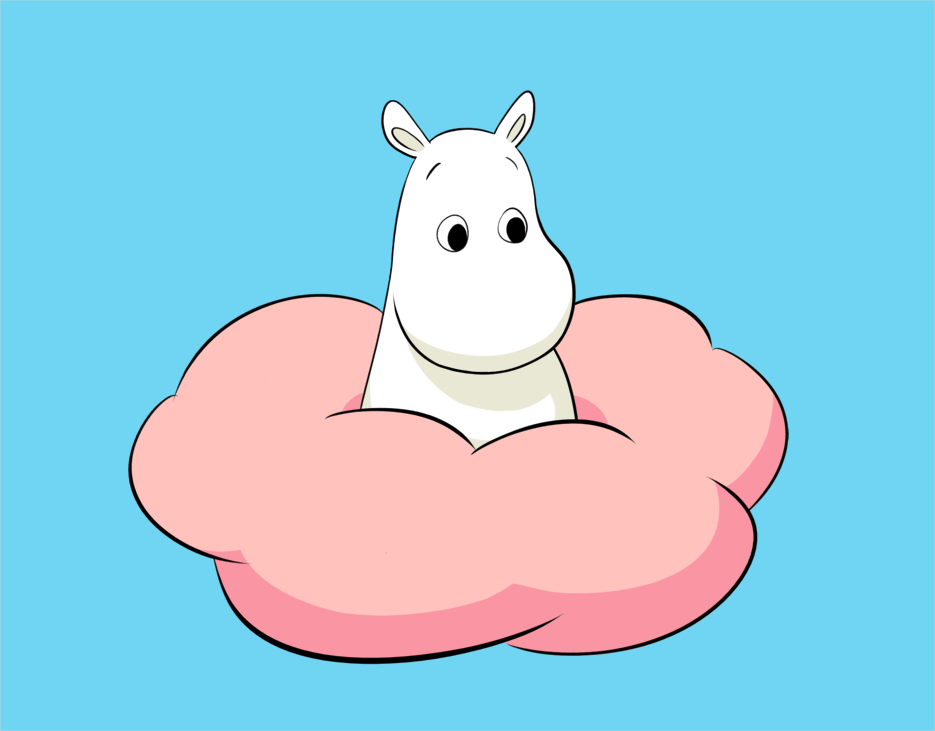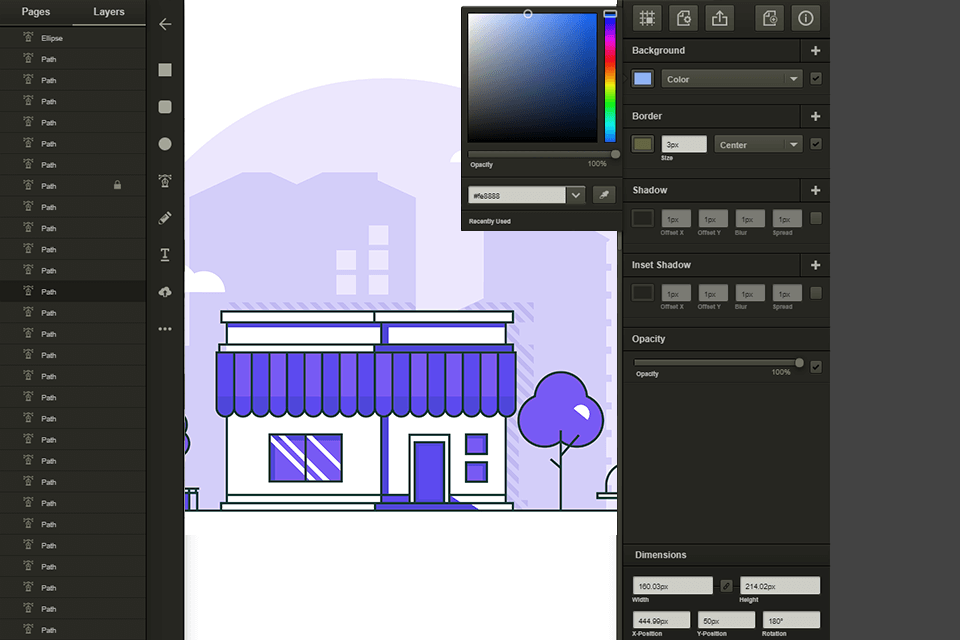Painting with Krita is an option, but it still requires exporting the image and loading it into Inkscape for final corrections. The GIMP has to be used for assembling the final image due to the number of layers sometimes required. The GIMP is fast at handling layers. In my mind is another country running wide-open in the snow, sun, and rain it's old to us in the world but it's new just the same vibrant vintage melodies of laughter, love, and pain tall grass grows at the edge of town hiding the rails that run away forever a whitewashed shack stands by a sycamore grove exuding straw-strewn silence from its dusty heart a water tower stands at the east end of. The new fundraiser this month focuses on importing and creating vector art, making SVG their standard vector file type. Krita is also evolving their text tool so that it's easier and more intuitive for users. 'We've really wanted to go an improve text and vector support in Krita for a really long time, and now's the time,' says lead.
What are vector graphics? ¶ Krita is primarily a raster graphics editing tool, which means that most of the editing changes the values of the pixels on the raster that makes up the image. Vector graphics on the other hand use mathematics to describe a shape. Because it uses a formula, vector graphics. Thanks to the 2015 Kickstarter, Krita has animation. In specific, Krita has frame-by-frame raster animation. There's still a lot of elements missing from it, like tweening, but the basic workflow is there. To access the animation features, the easiest way is to change your workspace to Animation.

Krita supports layers which help to better control parts and elements ofyour painting.
Think of an artwork or collage made with various stacks of papers withsome paper cut such that they show the paper beneath them while somehide what's beneath them. If you want to replace an element in theartwork, you replace that piece of paper instead of drawing the entirething. In Krita instead of papers we use Layers. Layers are part ofthe document which may or may not be transparent, they may be smaller orbigger than the document itself, they can arrange one above other, namedand grouped.
Layers can give better control over your artwork for example you canre-color an entire artwork just by working on the separate color layerand thereby not destroying the line art which will reside above thiscolor layer.
You can edit individual layers, you can even add special effects tothem, like Layer styles, blending modes, transparency, filters andtransforms. Krita takes all these layers in its layer stack, includingthe special effects and combines or composites together a final image.This is just one of the many digital image manipulation tricks thatKrita has up its sleeve!
Usually, when you put one paint layer on top of another, the upper paintlayer will be fully visible, while the layer behind it will either beobscured, occluded or only partially visible.
Krita Vector Tool
Managing layers¶
Some artists draw with limited number of layers but some prefer to havedifferent elements of the artwork on separate layer. Krita has some goodlayer management features which make the layer management task easy.
You can group layers and organizethe elements of your artwork.
The layer order can be changed or layers can be moved in and out of agroup in the layer stack by simply holding them and dragging anddropping. Layers can also be copied across documents while in thesubwindow mode How to reboot macbook pro. , bydragging and dropping from one document to another.

Gl300l. These features save time and also help artists in maintaining the filewith a layer stack which will be easy to understand for others who workon the same file. In addition to these layers and groups can both belabeled and filtered by colors, thus helping the artists to visuallydifferentiate them.
To assign a color label to your layer or layer group you have to rightclick on the layer and choose one of the given colors from the contextmenu. To remove an already existing color label you can click on the ‘x'marked box in the context menu.

Krita supports layers which help to better control parts and elements ofyour painting.
Think of an artwork or collage made with various stacks of papers withsome paper cut such that they show the paper beneath them while somehide what's beneath them. If you want to replace an element in theartwork, you replace that piece of paper instead of drawing the entirething. In Krita instead of papers we use Layers. Layers are part ofthe document which may or may not be transparent, they may be smaller orbigger than the document itself, they can arrange one above other, namedand grouped.
Layers can give better control over your artwork for example you canre-color an entire artwork just by working on the separate color layerand thereby not destroying the line art which will reside above thiscolor layer.
You can edit individual layers, you can even add special effects tothem, like Layer styles, blending modes, transparency, filters andtransforms. Krita takes all these layers in its layer stack, includingthe special effects and combines or composites together a final image.This is just one of the many digital image manipulation tricks thatKrita has up its sleeve!
Usually, when you put one paint layer on top of another, the upper paintlayer will be fully visible, while the layer behind it will either beobscured, occluded or only partially visible.
Krita Vector Tool
Managing layers¶
Some artists draw with limited number of layers but some prefer to havedifferent elements of the artwork on separate layer. Krita has some goodlayer management features which make the layer management task easy.
You can group layers and organizethe elements of your artwork.
The layer order can be changed or layers can be moved in and out of agroup in the layer stack by simply holding them and dragging anddropping. Layers can also be copied across documents while in thesubwindow mode How to reboot macbook pro. , bydragging and dropping from one document to another.
Gl300l. These features save time and also help artists in maintaining the filewith a layer stack which will be easy to understand for others who workon the same file. In addition to these layers and groups can both belabeled and filtered by colors, thus helping the artists to visuallydifferentiate them.
To assign a color label to your layer or layer group you have to rightclick on the layer and choose one of the given colors from the contextmenu. To remove an already existing color label you can click on the ‘x'marked box in the context menu.
Once you assign color labels to your layers, you can then filter layershaving similar color label by clicking on one or more colors in the listfrom the drop-down situated at the top-right corner of the layer docker.
Types of Layers¶
The image above shows the various types of layers in Layers. Each layer type has a different purpose for example all the vector elements can be only placed on a vector layer and similarly normal raster elements are mostly on the paint layer, Layers and Masks page contains more information about these types layers.
Now Let us see how these layers are composited in Krita.
How are layers composited in Krita ?¶
In Krita, the visible layers form a composite image which is shown onthe canvas. The order in which Krita composites the layers is frombottom to top, much like the stack of papers we discussed above. As wecontinue adding layers, the image we see changes, according to theproperties of the newly added layers on top. Group Layers compositeseparately from the other layers in the stack, except when pass throughmode is activated. The layers inside a group form a composite imagefirst and then this composite is taken into consideration while thelayer stack is composited to form a whole image. If the pass throughmode is activated by pressing the icon similar to bricked wall, thelayers within the group are considered as if they are outside of thatparticular group in the layer stack, however, the visibility of thelayers in a group depends on the visibility of the group.
The groups in a PSD file saved from Photoshop have pass-through mode onby default unless they are specifically set with other blending modes.
Inherit Alpha or Clipping layers¶
There is a clipping feature in Krita called inherit alpha. Vflyteair. It is denotedby an alpha icon in the layer stack.
It can be somewhat hard to figure out how the inherit alpha featureworks in Krita for the first time. Once you click on the inherit alphaicon on the layer stack, the pixels of the layer you are painting on areconfined to the combined pixel area of all the layers below it. Thatmeans if you have the default white background layer as first layer,clicking on the inherit alpha icon and painting on any layer above willseem to have no effect as the entire canvas is filled with white. Hence,it is advised to put the base layer that you want the pixels to clip ina group layer. As mentioned above, group layers are compositedseparately, hence the layer which is the lowest layer in a group becomesthe bounding layer and the content of the layers above this layer clipsto it if inherit alpha is enabled.
You can also enable alpha inheritance to a group layer.
Masks and Filters¶
Krita supports non-destructive editing of the content of the layer.Non-destructive editing means editing or changing a layer or imagewithout actually changing the original source image permanently, thechanges are just added as filters or masks over the original image whilekeeping it intact, this helps a lot when your workflow requires constantback and forth. You can go back to original image with a click of abutton. Just hide the filter or mask you have your initial image.
You can add various filters to a layer with Filter mask, or add Filterlayer which will affect the whole image. Layers can also be transformed non-destructively with the transformation masks, and even have portions temporarily hidden with a Transparent Mask. Non-destructive effects like these are very useful when you change your mind later, or need to make a set of variations of a given image.
Note
Krita Vector Drawing
You can merge all visible layers by selecting everything first Layer ‣ Select ‣ Visible Layers. Then Combine them all by merging Layer ‣ Merge with Layer Below.
These filters and masks are accessible through the right-click menu (asshown in the image below) and the Plus icon on the layer docker.
You can also add a filter as a mask from filter dialog itself, byclicking on the Create Filter Mask button.
All the filters and masks can also be applied over a group too, thusmaking it easy to non-destructively edit multiple layers at once. In thecategory Layers and masks you can readmore about the individual types of layers and masks.
Layer Docker has more information aboutthe shortcuts and other layer management workflows.

